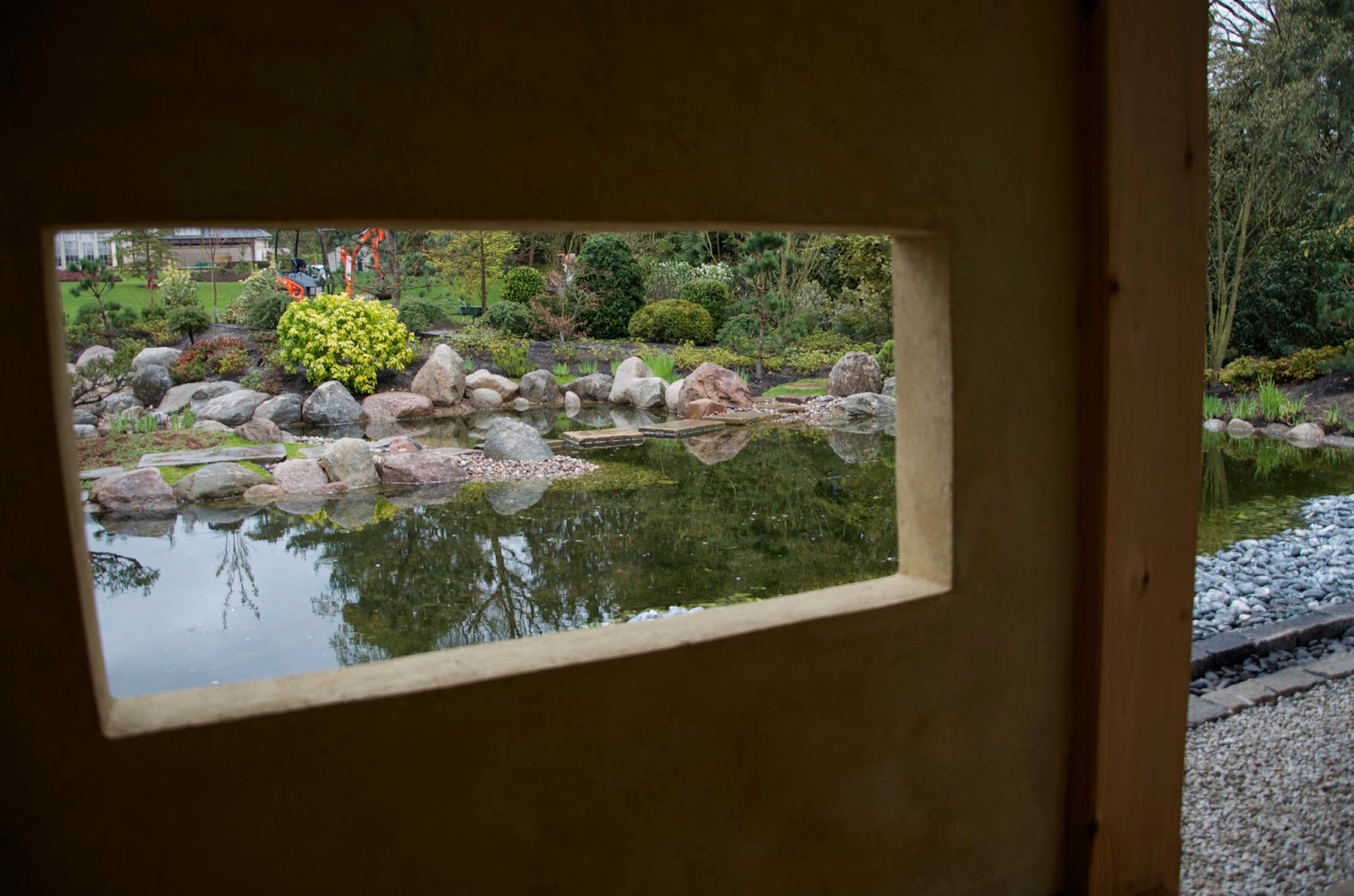With this garden project what we have tried to do is to find ways of using and expressing ideas and approaches that arise in the Japanese garden tradition, and to find ways of interpreting and expressing them in a way that holds true more to the interior spirit than the external form. Prime among the concerns that have underscored the whole creative process has been to recognise and consider the interaction of the viewer and the garden. How will the garden be revealed and seen? How does the presence of the viewer alter the garden? How does the garden in turn shape and transform the viewer? The very qualities of space, the sensory flavours of experience evoked by the garden and building become more hugely important.
It came very clear early in the process of creation that the space contained the seeds of its own creation. That is to say it was not always a question of the 'designer' seeking to impose his/her will on the garden and building to conform to preconceived notions and expectations. Rather it became a process of cooperation with the space itself. Guiding the project primarily involved holding the initial intention. The intention in this case was to create a space that held the qualities of harmony, calmness and sincerity. The ego can mask true intention of purpose, hence it is important that the ego is contained. The questions to ask are "what does the garden itself desire?", "what does the garden need to be able to express itself?" When you remain quiet within yourself then the answers can be heard loudly and clearly. Every garden project becomes a journey of discovery in itself. The creator is re-created by the creation. Every garden project becomes a journey of discovery in itself. The creator is re-created by the creation.
In keeping with the Japanese garden tradition much of the planting is evergreen, particularly the shrub planting which forms the principal volume of planting in the garden. There is quite a lot of tree planting, several varieties of cherry trees (Prunus species) for spring blossom, dogwoods (Cornus spp.), maples (Acer spp.) are the principal deciduous trees, as well as a number of coniferous trees (Pinus, Cedrus and Abies). The trees give height to the structure of the garden, and their growth will require careful monitoring and pruning so that their shape and volume is in proportion to the overall form of the garden. Amongst the planting are several specimens intended to create specific focal points in the garden. An example of this is the large cloud pruned pine that sits on the island. This tree which was obtained from a bonsai specialist is over 70 years old.
In most contemporary gardens in Japan the palette of planting is quite limited. Western gardens, particularly English gardens, tend to utilise a greater range of planting. In the garden of Hakaze-an the understory planting of shrubs and herbaceous material has been planted in groups or drifts. The intention was to mass the planting volumes into coherent forms that will give the impression of flow and movement. Large quantities of Box (Buxus sempervirens) have also been used with the intention of developing them into clipped forms. The planting is intended overall to create both forms but another important consideration is the variety of textural effects that enrich the visual sensory experience.
 |
| The island with its bonsai pine |
 |
| The cascade is set toward one corner of the pons, it provides a variety of gentle sounds |
To follow this blog: the 'Follow by E-mail' facility is now operating. Don't miss a beat and sign in.





No comments:
Post a Comment